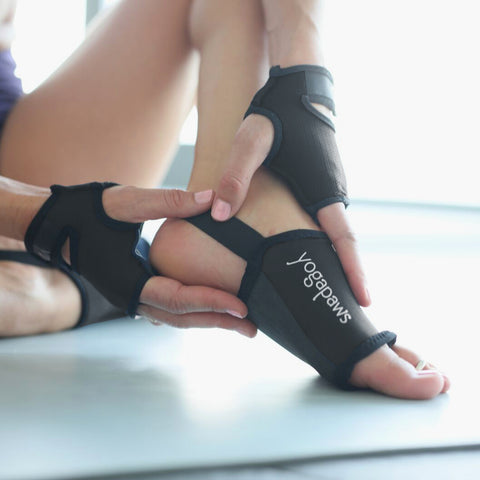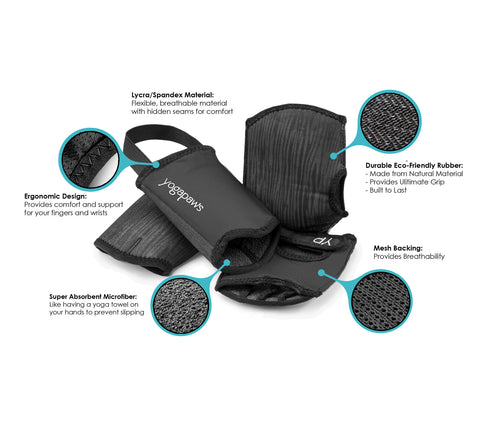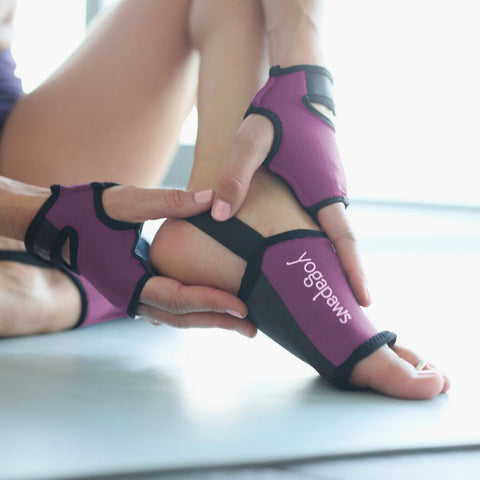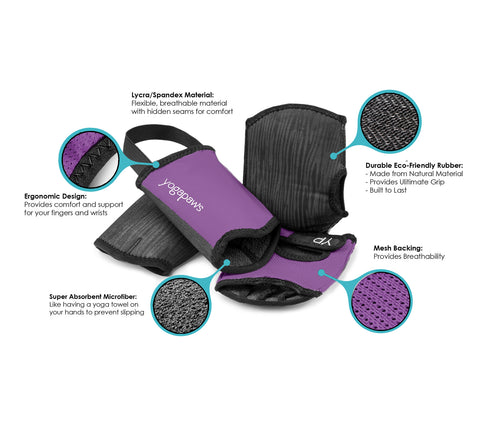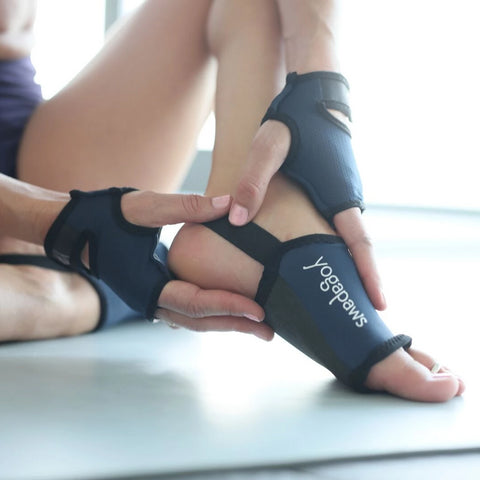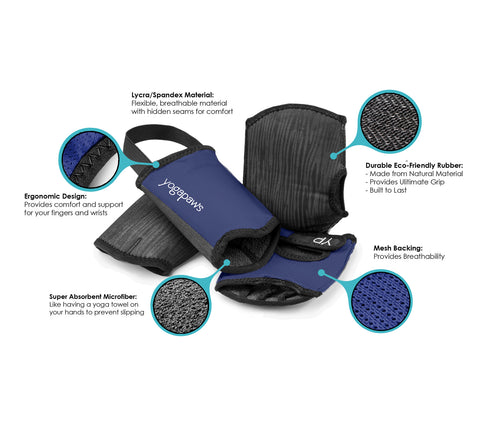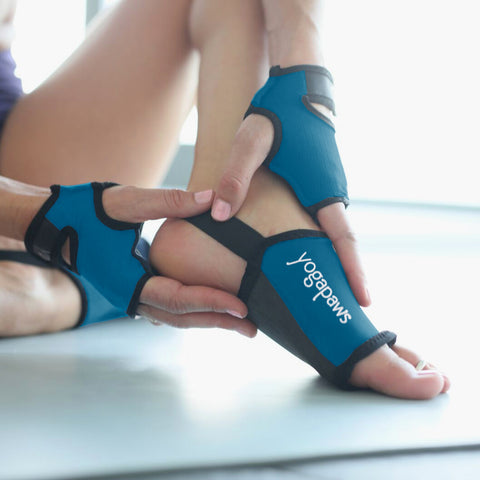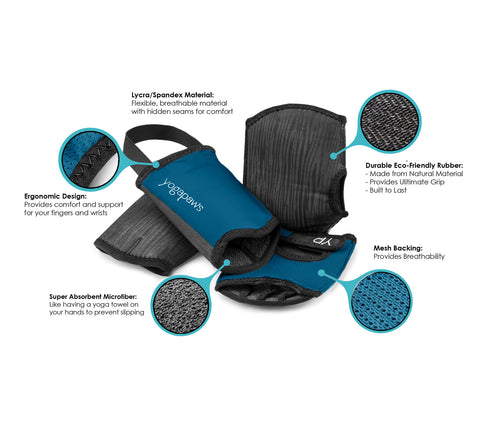Posted on January 22 2018
 For many people, mindful eating looks like a far less achievable goal than any headstand or arm balance. Meals aren’t just eaten “on wheels,” they’re hurried down at the desk, in the locker room or just walking down the sidewalk. And, even when the time pressure relents, it may be hard to fight back the army of issues that have arisen around food: How much? What? When? Which magic bullet will lead to thinness, attractiveness, and immortality?
For many people, mindful eating looks like a far less achievable goal than any headstand or arm balance. Meals aren’t just eaten “on wheels,” they’re hurried down at the desk, in the locker room or just walking down the sidewalk. And, even when the time pressure relents, it may be hard to fight back the army of issues that have arisen around food: How much? What? When? Which magic bullet will lead to thinness, attractiveness, and immortality?
Yoga can be a powerful tool for putting eating in its proper—and honored—place in life. A recent study led by researchers at the Fred Hutchinson Cancer Research Center showed that mindfulness on the mat could be highly effective in creating healthy eating patterns. “We hypothesized that mindfulness – a skill learned either directly or indirectly through yoga – could affect eating behavior," says Alan Kristal, associate head of the Cancer Prevention Program in the Public Health Sciences Division at the Hutchinson Center. “People who ate mindfully – those who were aware of why they ate and stopped eating when full – weighed less than those who ate mindlessly, who ate when not hungry or in response to anxiety or depression. Our study identified a strong association between yoga practice and mindful eating but found no association between other types of physical activity, such as walking or running, and mindful eating.”
Kristal, who’s been a yoga enthusiast for over 15 years, says that yoga cultivates mindfulness in a number of ways, such as being able to hold a challenging physical pose by observing the discomfort in a non-judgmental way, with an accepting, calm mind and focus on the breath. "This ability to be calm and observant during physical discomfort teaches how to maintain calm in other challenging situations, such as not eating more even when the food tastes good and not eating when you’re not hungry," he says.
Unlike fad diets or limited approaches to eating, yoga involves mind, body, and spirit in the journey toward optimal health. Certain poses work to calm the mind in order to make better choices and increase the metabolism to keep the body both energized and cleansed.
 |
Balasana (Child’s Pose) Kneel on the floor. With your big toes together, sit on your heels and then separate your knees about hip width. Exhale as you lay your torso between your thighs. Lengthen your tailbone away from the back of the pelvis. Lift the base of your skull away from the back of your neck. Place your hands alongside your torso, palms up, relaxing the fronts of the shoulders to the floor. Hold for one to three minutes. Notice the light feeling of the entire front body pushing against the thighs as you inhale and the tight feeling of drawing the entire front body back to the spine on the exhale. |
 |
Parivrtta Parsvakonasana (Revolved Side Angle Pose) How to do it: Stand in Tadasana (mountain pose). Exhale and step or jump your feet three to four feet apart. Place your hands on your hips. Rotate your right foot about 90 degrees and turn your left foot in slightly to the right. Align the right and left heels. Turn your right thigh outward, aligning the center of the right knee over the ankle. Exhale and turn your torso to the right until you’re facing out over the right leg. As you do, lift your left heel off the floor and rotate on the ball of the foot until the inner left foot is parallel to the inner right foot. Exhale and bend your right knee, working toward bringing the right thigh parallel to the floor. Pressing the left thigh toward the ceiling and press through the left heel. On the next exhale, turn further to the right, lean the torso down and place the left hand on the floor or a block inside the right foot. Move your right thumb to the right hip crease and push the thigh toward the floor. Lengthen on the inhale; soften toward the floor on the exhale. Hold for several breaths. Windmill your left arm up, bring the left foot up to meet the right. Return to Tadasana and reverse.(Model is demonstrating a variation with arm placed on the outside of the foot) |
 |
Phalakasana (Plank)
Stand in Tadasana (mountain pose). Start in Adho Mukha Svanasana (down dog). Inhale and draw your torso forward so that the arms are perpendicular to the floor and the shoulders are directly over the wrists. The torso should be parallel to the floor. Press your front thighs toward the ceiling and press your heels toward the floor. Look straight down at the floor, keeping the face relaxed. Hold for one to three minutes. |
 |
Virabhadrasana III (Warrior III) How to do it: |
 |
Paripurna Navasana (Boat Pose) How to do it: |
Poses like these, combined with breath work and meditation, help to make the connection between the health-giving benefits of food and a mind, spirit, and body that are calm and fully realized.

